#nationalmuseet
Explore tagged Tumblr posts
Text

13 September 2024






#Denmark#Brazil#President Luiz Lula da Silva#Sonia Guajajara#Tupinamba cloak#sacred cloak#Rio de Janeiro#scarlet ibis bird#Tupinamba#indigenous people#artefacts#history#culture#museum#Nationalmuseet#National Museum#ceremonial cape
74 notes
·
View notes
Text

Kylix, man vomiting, Brygos or Dokimasia Painter
Man vomiting, a boy holding his forehead. Tondo of an Attic red-figured kylix (type B) attributed to near the Brygos Painter or to the Dokimasia Painter. From Italy. Nationalmuseet, København, Danmark.
#kylix#red figured#nationalmuseet#københavn#danmark#brygos painter#dokimasia painter#italy#italia#potery#greek potery#attic potery#attic kylix#red figured potery#red figured kylix#vomiting#ancient art#greek art#attic art#red figured art#copenhagen#kopenhagen#denmark#dänemark#copenhague#dinamarca#art#history#arte#kunst
7 notes
·
View notes
Text
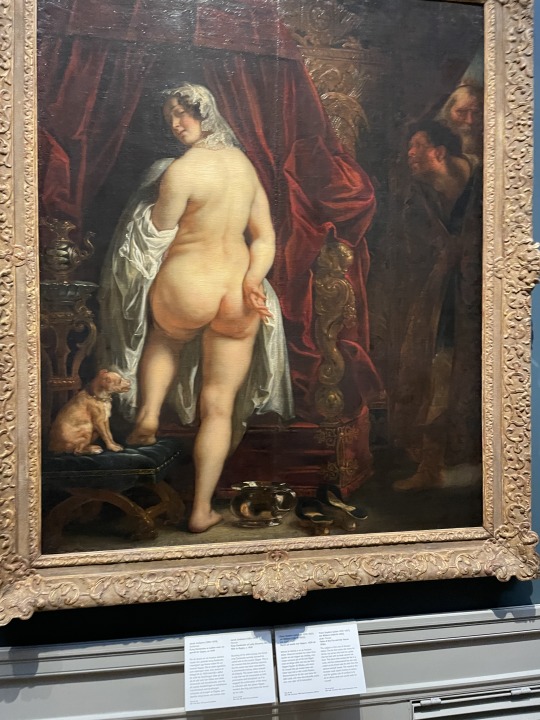
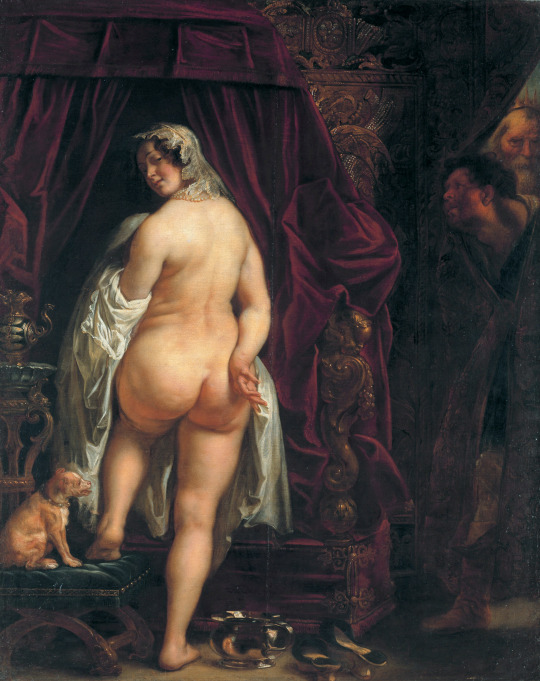
I saw this painting in the museum a few days ago and with all my access to the internet and nakey adult content I was just stopped in my tracks by her. Can you imagine what this must've done to people in the 1640s.
71 notes
·
View notes
Text
Hey National Museum of Denmark, I fixed ur sign, how about writing how you got all your First Nations stuff, and also which tribes they're from? Thx

#the archive hobgoblin#the admiral's homebrew#the admiral's outings#museology#nationalmuseet#national museum of denmark#colonialism
58 notes
·
View notes
Text
L'ambra dal Baltico alla Siria: ricercatori danesi trovano (rari) monili di tremila anni fa nell’antica Hama
ARCHEOLOGIA | Dal Baltico alla Siria, lungo le vie dell'ambra: ricercatori danesi trovano (rari) monili di tremila anni fa nell’antica Hama Lo studio degli archeologi del Nationalmuseet di Copenaghen
Elena Percivaldi Intrigante scoperta nella città antica di Hama, in Siria. Un team di archeologi danesi, riprendendo in mano i materiali di uno scavo effettuato negli anni ’30 del Novecento che aveva riportato alla luce oltre 1.600 tombe risalenti a circa 3.000 anni fa, ha notato un dettaglio di grande interesse. In una delle urne funerarie, contenente i resti cremati di una donna e un bambino,…
#ambra#ambra baltica#archeologia#archeologia danese#Danimarca#Età del Bronzo#Hama#Mar Baltico#Mesopotamia#Nationalmuseet#notizie#scambi commerciali antichi#scavi archeologici#scoperte#Siria#Siria antica#studi#Vicino Oriente Antico
0 notes
Text


Eurystheus being scared of the Erymanthian Boar and hinding in his pithos
#herakles#greek mythology#mythology and folklore#Erymanthian Boar#black figure vase#Nationalmuseet i København#Thorvaldsen Museum#poor guy
1 note
·
View note
Text
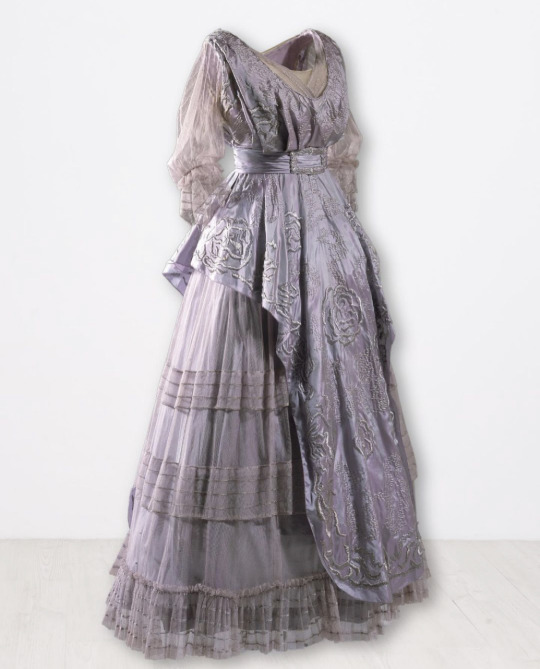

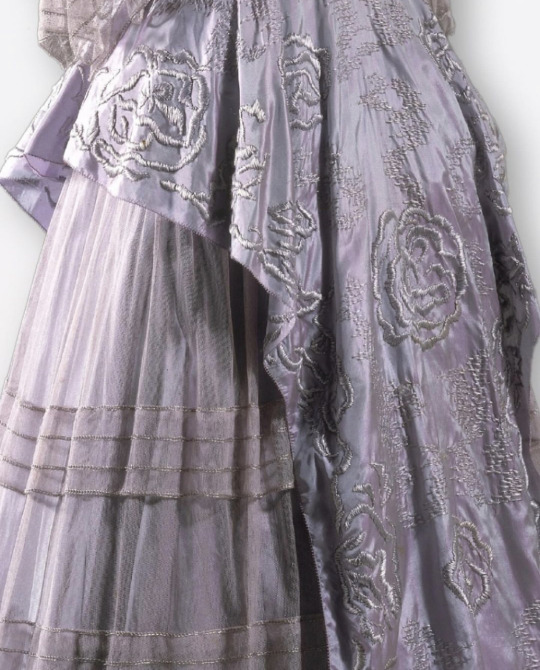
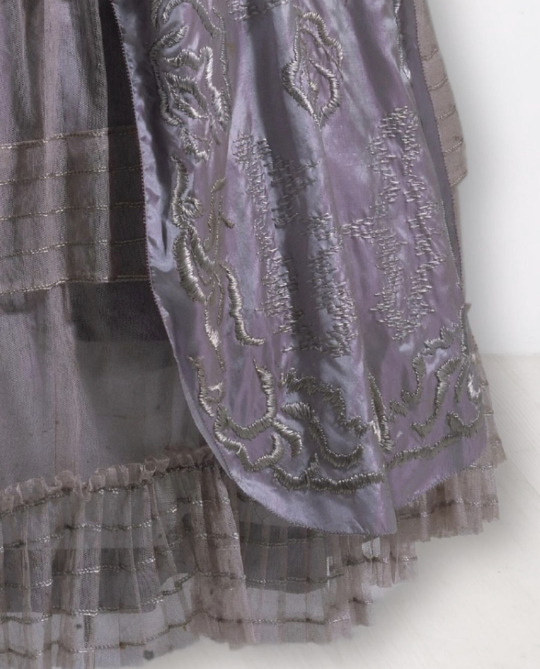
Evening Dress
c. 1916
made by Daverkosen’s master tailor Børre-Lorenzen for his daughters wedding
Nationalmuseet
#1910s#historical fashion#fashion history#history of fashion#dress history#vintage fashion#vintage dress#historical clothing#frostedmagnolias#whimsical#purple
2K notes
·
View notes
Text


Danish Royal Family - The Queen attends the Specialists’ 20th anniversary at Nationalmuseet Københavb (Photo by Jesper Sunesen) | April 09, 2024
#royaltyedit#theroyalsandi#queen mary#queen mary of denmark#queen of denmark#queen consort of denmark#danish royal family#my edit
89 notes
·
View notes
Text

Strettweg Cult Wagon, c. 6th century BCE, Hallstatt, Steiermark, Austria. Source: World History Encyclopedia
Celtic Art: A Brief Introduction
Celtic art is, by and large, an under-discussed and misunderstood subject.

Detail of Celtic sword and scabbard, c. 60 BCE, Source: Metropolitan Museum of Art

Basse Yutz Flagon, c. mid-5th century BCE, La Tène, Basse Yutz, France, Source: The British Museum

Battersea Shield, c. 350-50 BCE, La Tène, Battersea, London. Source: The British Museum

Inside of the Gundestrup Cauldron, c. 150-1 BCE, La Tène, Himmerland, Denmark, Source: Nationalmuseet København Danmark.

Desborough Mirror, c. 50 BCE-50 CE, La Tène, Desborough, England, Source: The British Museum.
27 notes
·
View notes
Text

"Bronze articles of personal adornment. Belt box with bosses, diameter c. 7"; spiral wire bracelet, height c. 2¼"; cast torque, diameter c. 8"; and spiral hair pin, length c. 9". Found together at Røgerup, Zealand, Denmark. Nationalmuseet, Copenhagen."
From Prehistoric European Art (1968), by Walter Torbrügge.
20 notes
·
View notes
Text
(!) For educational purposes only.
Source: Nationalmuseet. Film: Omkring Danmarks Befrielse (41:40).
After the German forces in Denmark surrendered to the Allies, Dr. Best sought the Freedom Council’s protection. Here he’s guarded by resistance fighters as he leaves Dagmarhus. May 5, 1945.
13 notes
·
View notes
Text



København / Copenhagen.
Frihedskæmpere på lastbiler i Store Kongensgade i København i dagene efter befrielsen d. 5. maj 1945.
Dengang: Maj 1945, ukendt fotograf. Nu: 2. november 2024, Jens Voigt. Samling: Nationalmuseet, Danmark.
Resistance fighters on trucks in Store Kongensgade in Copenhagen in the days after the liberation on May 5, 1945.
Then: May 1945, unknown photographer. Now: November 2, 2024, Jens Voigt. Collection: National Museum, Denmark.
Følg på / follow on Instagram: @ghosts_of_history https://www.instagram.com/ghosts_of_history/
#history#photo-artist#photography#then and now#denmark#jens voigt#ww2 history#ww2#copenhagen#digital creator
9 notes
·
View notes
Text
‘A Beacon of Hope’: Indigenous People Reunited With Sacred Cloak In Brazil
Denmark Sends 300-Year-Old Feathered Cloak Considered An Ancestor By Tupinambá de Olivença to Rio
— Tiago Rogero | Rio de Janeiro, Brazil 🇧🇷 | Thursday 12 September 2024

The Cloak will be Publicly Unveiled at a Ceremony on Thursday. Photograph: Niels Erik Jehrbo/Nationalmuseet
The scene resembled a funeral: seven Indigenous people, overcome with tears, gathered around a loved one resting in a coffin-like wooden box. Instead of grief, however, it was a moment of celebration: the long-awaited reunion between the Tupinambá de Olivença people and a sacred feathered cloak that was taken from Brazil at least 335 years ago.
The relic – which the Indigenous people consider not as an object but as an ancestor – had been at Denmark’s National Museum until July, when it was sent to Rio de Janeiro.

Chief Jamopoty and six other Representatives of the Tupinambá de Olivença people reunited for the first time with the cloak taken from Brazil at least 335 years ago. Photograph: Tiago Rogero/The Guardian
It will be publicly unveiled at a ceremony at Brazil’s National Museum on Thursday attended by President Luiz Inácio Lula da Silva. But the first private encounter between the Tupinambá of Olivença and the cloak took place on Sunday, in an intimate moment witnessed by the Guardian.
The reunion had been eagerly anticipated: after the cloak’s return to Brazil, the Indigenous group had complained that they were not initially given the chance to perform their reception rituals for the sacred relic, which they refer to in the same terms they would to a person.
“We spoke to him, and he responded,” said Cacique Maria Valdelice Amaral de Jesus, 62, known as Jamopoty Tupinambá.

About 200 Tupinambá de Olivença made the 1,250km journey from their land in Bahia to Rio de Janeiro and have been camping near the National Museum. Photograph: Tiago Rogero/The Guardian
Jamopoty said the cape had returned to resolve the numerous land disputes threatening Indigenous communities across Brazil, adding: “He said we must have our lands demarcated.”
She was joined in the temperature-controlled room by six other representatives of the Tupinambá de Olivença, who for about 20 minutes prayed and spoke to the cloak, which lay under an oxygen-free glass dome, as technicians carefully monitored the humidity.
Jamopoty’s remarks were recorded by the documentary director Carina Bini who, with the Indigenous leader’s consent, shared them with the Guardian.
“You’re lying down, but you’ll stand up. We came to visit you,” she said.
“I don’t even have words. It’s the most beautiful thing I have ever seen,” she said as tears ran down her face, which was painted with the red dye of annatto seeds.
Her partner, Averaldo Rosario Santos, told the cloak that its return was “a beacon of hope for all the Indigenous peoples that remain in this once-invaded Brazil.”

Maria Valdelice Amaral de Jesus, 62, known as Jamopoty Tupinambá. Photograph: Tiago Rogero/The Guardian
Tupinambá cloaks – typically made from thousands of scarlet ibis feathers – were used as ceremonial vestments by coastal Indigenous peoples, said Amy Buono, an assistant professor of art history at Chapman University.
“These capes probably functioned as supernatural skins, transferring the vital force from one living organism to another,” said Buono, who has studied this cloak and 10 others still in European museums in Denmark, Italy, France, Belgium and Switzerland.
“Tupinambá capes were some of the most sought-after artefacts in the early 16th century,” she said. Several Tupinambá cloaks were worn by the courtiers during a 1599 procession at the court of the Duke of Württemberg in Stuttgart.
The newly returned cloak was first inventoried by Denmark in 1689 as part of the collection of Frederick III, possibly after it was taken from Brazil by Dutch forces, which occupied the state of Pernambuco from 1630 to 1654.
“When the cloak was taken from us, it weakened our community,” said Jamopoty.

A Parade in Stuttgart at the Court of Duke Frederick I of Wurttemberg in 1599. Photograph: Album/Alamy
The Tupinambá de Olivença’s fight for the cloak’s repatriation began in 2000 when it was loaned for an exhibition in São Paulo. Jamopoty’s mother, Nivalda Amaral de Jesus, who was known as Amotara, visited the exhibit and demanded its return to Brazil.
At the time, the Tupinambá were not even officially recognised as an Indigenous people – they were even described as extinct in history books.
Under pressure from Amotara (who died in 2018) and other leaders, the Tupinambá de Olivença were finally recognised in 2001 by the Brazilian government.
Eight years later, the first step was taken towards demarcating their territory – an area of 47,000 hectares spanning three municipalities in Bahia.
Since then, however, the Brazilian government has made no further progress in mapping their territory, which has led to land grabs by cocoa farmers and tourism developers.

Indigenous Leaders Frustrated Despite Cloak’s Return to Brazil after 300 Years! Denmark returns artefact but Tupinambá leaders say they were prevented from performing the necessary rituals to receive sacred relic. Cloak is made with about 4,000 Red Feathers of the Scarlet Ibis Bird was first inventoried by Denmark in 1689, but some believe it was taken from Brazil nearly 50 years before. Photograph: Niels Erik Jehrbo/Nationalmuseet

‘We Wanted To Perform Our Rituals, With Songs and Incense Using Our Herbs … It would have been a Special Moment for Strengthening Our Identity,’ said the Chief of Tupinambá de Olivença People. Photograph: Niels Erik Jehrbo/Nationalmuseet
About 200 Tupinambá de Olivença made the 1,250km journey to Rio to receive the cloak, camping near the National Museum, which is still being rebuilt after a huge fire destroyed about 85% of its collection in 2018.
The museum’s director, Alexandre Keller, said the cloak would go on display to the public when the museum reopens in April 2026. Until then, it will be available only to researchers and Indigenous people.
There is no indication that any other Tupinambá cloak will be repatriated but Buono argued that they should all return to Brazil: “These capes were collected by Europeans to be displayed as curiosities and studied for their materials.
“But for the Tupinambá these were, and continue to be, sacred, living forces. Their presence in Brazil will be an extremely important marker of communal identity and evidence for land rights and other legal matters,” she said.
#Indigenous Peoples#Brazil 🇧🇷#Rio de Janeiro#Americas#Luiz Inácio Lula da Silva#Denmark 🇩🇰#Features#Sacred Cloak#‘A Beacon of Hope’#300-Year-Old Feathered Cloak#Ancestor | Tupinambá de Olivença | Rio#The Guardian USA 🇺🇸
14 notes
·
View notes
Text
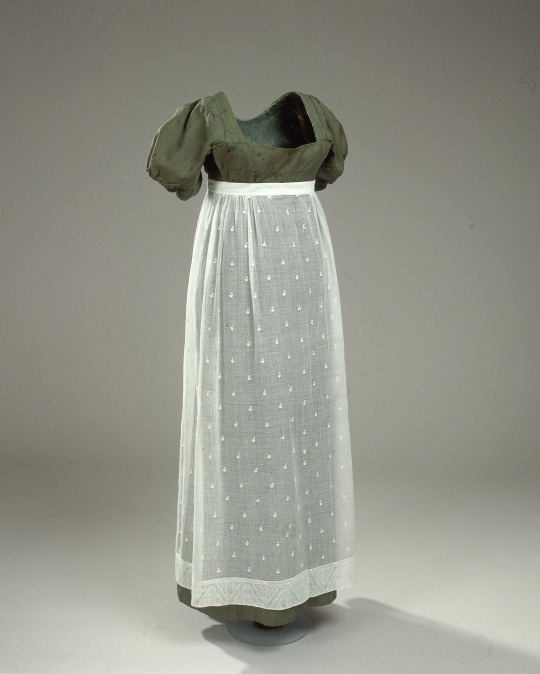
Green chemise dress with apron
Early 1800s, Napoleonic era
The cut of the chemise dress was simple. This meant that more women could sew their own dresses. The common people, who could not afford to go to a tailor, therefore had the opportunity to follow fashion to a greater extent. The green chemise dress was probably used both for everyday life and parties.
The chemise dress comes with a white apron. The white apron was probably used for parties, while the variegated one was used for everyday life.
Nationalmuseet, Denmark
#chemise#Grøn chemisekjole#dress#fashion#fashion history#history of fashion#empire style#empire waist#napoleonic#napoleonic era#empire waistline#historical fashion#dresses
73 notes
·
View notes
Text

Brooch C6605
A different colouring i did for a print. I wish i had the patience to draw these again. They are a lot of fun but take so so much time.
Object C6605 in the Danish Nationalmuseet
#viking age#norse#illustration#archaeology#iron age#denmark#brooch#borre style#bronze#penannular brooch#scandinavia#nordic#viking#artists on tumblr#digital art#my art
45 notes
·
View notes
Note
hello! Im visiting Copenhagen in January and was wondering if you have any recommendations of things to do or like cafes/stores/etc to visit?
Hi nonnie! So sorry for the delayed answer, I was down with the flu/plague/?? most of december so I've only just gotten back to my inbox.
I've tried to make a compilation of the recommendations for places to see, eat, and shop that aren't just the usual touristy stuff. I hope you enjoy your trip and the weather won't be too Copenhagen-in-January!
Where to eat (especially bakeries)
Sct. Peders Bageri – The oldest bakery in Denmark! They have a wonderful selection of traditional Danish baked goods but their seasonal varieties are also incredible.
BUKA – They have a few bakeries in town now and some of the best croissants and pastries.
Cakery Copenhagen – The best eclairs in town, hands down. Always a bunch of fun seasonal varieties and mini versions.
Bertels Salon – They do cheesecakes. And they’re amazing. They have 10+ fresh varieties every day (!) and turned me into a cheesecake lover.
La Glace – They do traditional Danish layer cakes and fancy patisseries as well as hot chocolate ad libitum. Very atmospheric and historic. A bit more expensive all in all but not insanely so.
Torvehallerne – Two large greenhouses full of delicious food and other food/drink related stores. Coffee Collective for coffee, Rørt for Danish smørrebrød, Granny’s House for pastries and Ma Poule for their famous duck sandwich.
Broens Gadekøkken – A small street food market right by the bridge across from Nyhavn. Depending on when you’re here, there’s also an ice skating rink set up during winter.
Mahalle - Lebanese fusion kitchen at affordable prices. You might want to book a table just in case.
Jagger - Burgers! Not the most hyggelige surroundings (a bit too industrial chic) but you can't argue with the food. Highly recommend the milkshakes!
What to see
Glyptoteket – Absolutely gorgeous museum. Free entrance on the last Wednesday of the month.
Thorvaldsens Museum – Also stunning, focused on statues. Free entrance all Wednesdays.
Nationalmuseet – Bog bodies! Their seasonal exhibitions are usually very good.
David’s samling – Smaller museum with free entrance. Classical European and Islamic art.
Kronborg – AKA Hamlet’s castle. Technically outside Copenhagen but you can easily take the train the whole way. I highly recommend doing one of the daily guided tours (no additional cost to the entrance fee).
Rundetårn – A fun look into the old astrology tower with a lovely view of the city. The majority of the inside is one big ramp with some narrow stairs at the end so keep that in mind if you have trouble walking.
Assistentens Kirkegård digital guided tour – If the weather is with you, you can go for a digitally guided tour in the old graveyard, located in a park in the middle of the city. Here’s a link for the app.
Other nice parks in case it's not raining the whole time (Danes love going for a walk, what can I say) include the Botanical Garden, Frederiksberg Have (where you can peek into the elephant enclosure in the zoo) and Kongens Have.
To shop
Vintage shopping: There’s a bunch of good quality vintage stores on Studiestræde and Larsbjørnsensstræde. Also worth a mention is Audrey Vintage on Hyskenstræde, run by a woman who handpicks all the items from all around Europe.
Strøget is the place for high street shopping but I definitely recommend having a look around the inner city’s side streets and down Frederiksborggade (check out the home goods store Maduro here) over the lakes to Nørrebro where you’ll also find some more offbeat stores and great bars and restaurants.
The largest bookstore is Arnold Busck on Købmagergade for books in both Danish and English. Fiolstræde close by has the independent book café Brøg that I highly recommend both for books and for a quick cake + coffee. On Fiolstræde you’ll also find some used bookstores with a variety of options and other smaller shops and cafés.
20 notes
·
View notes